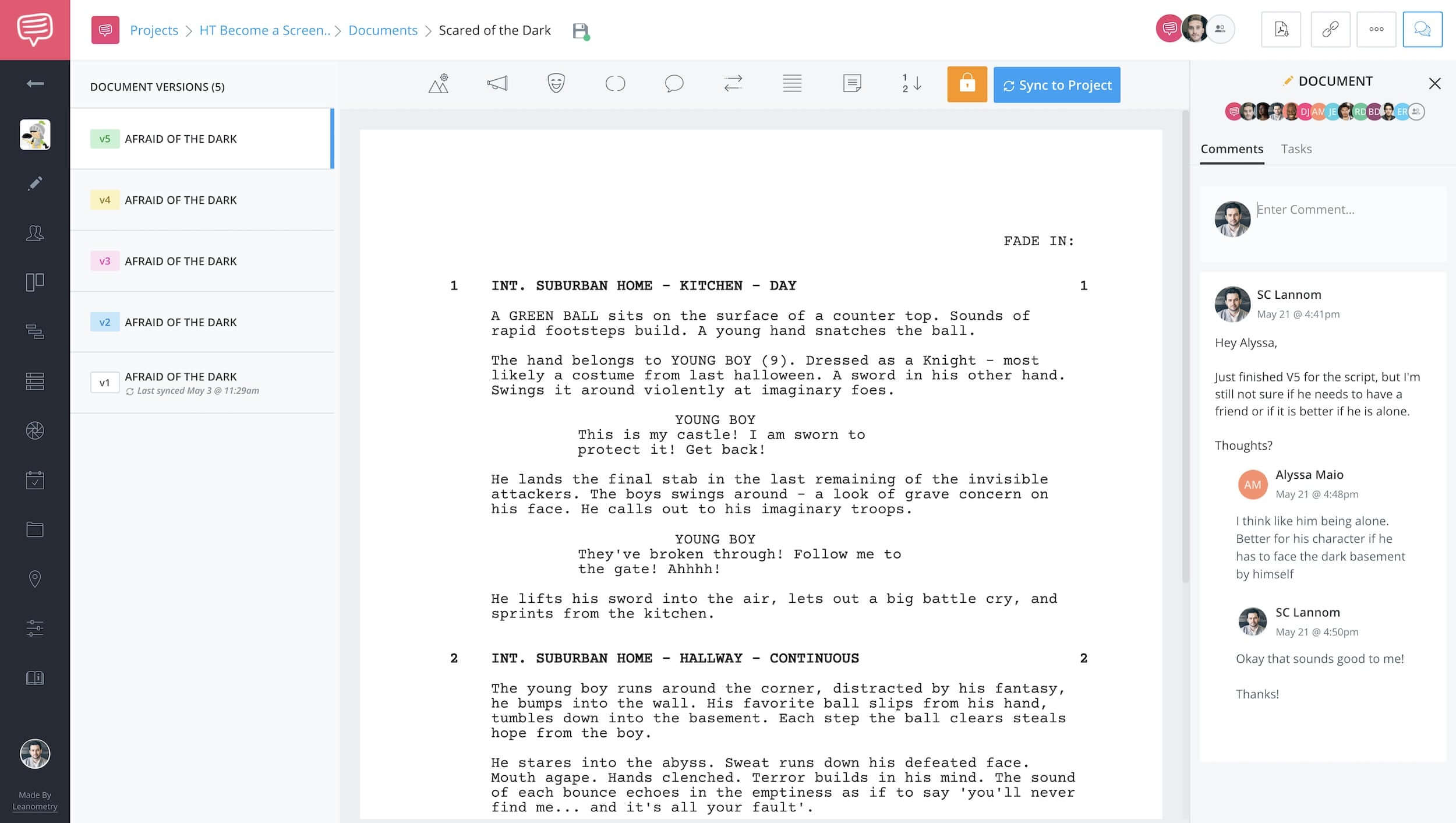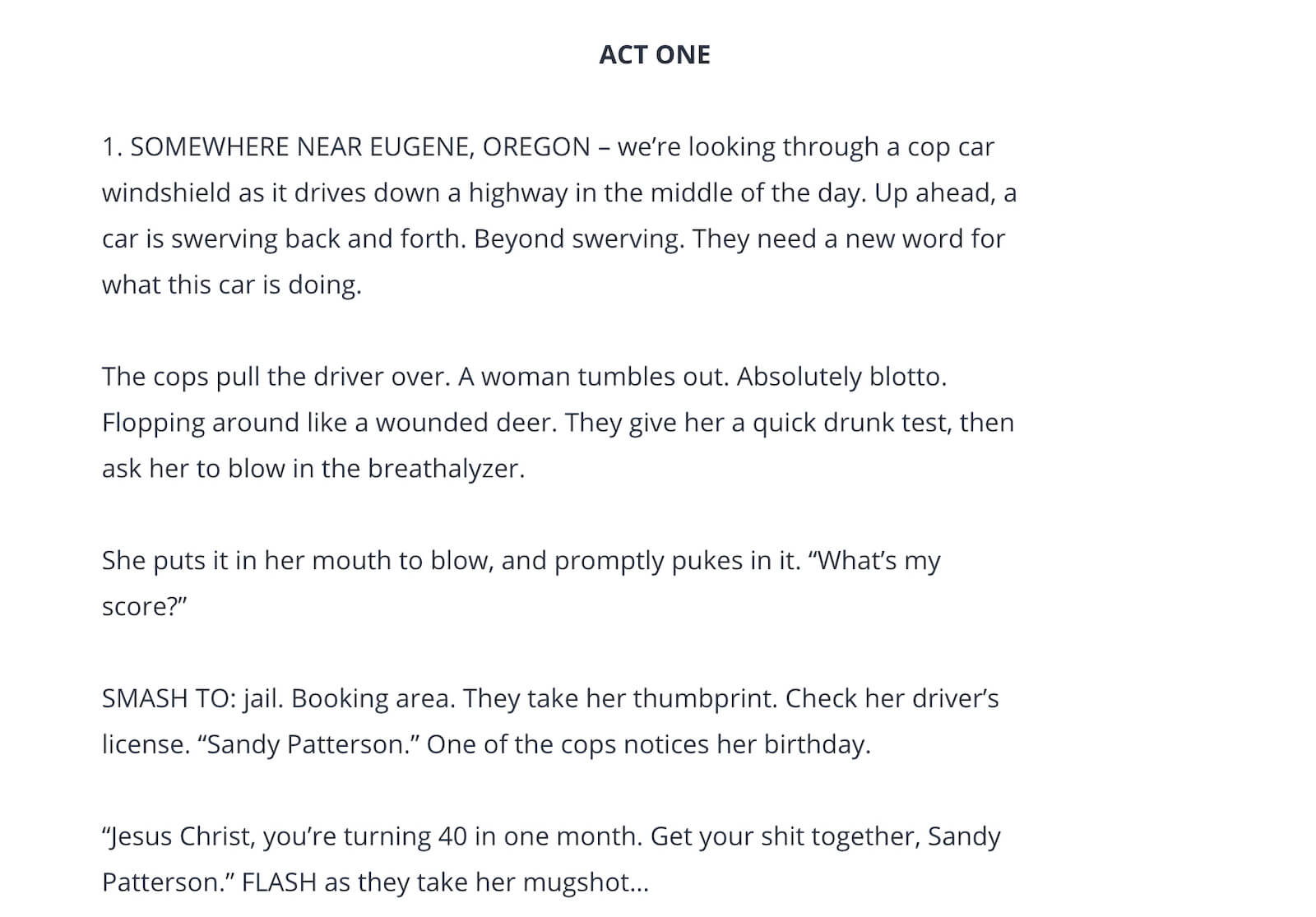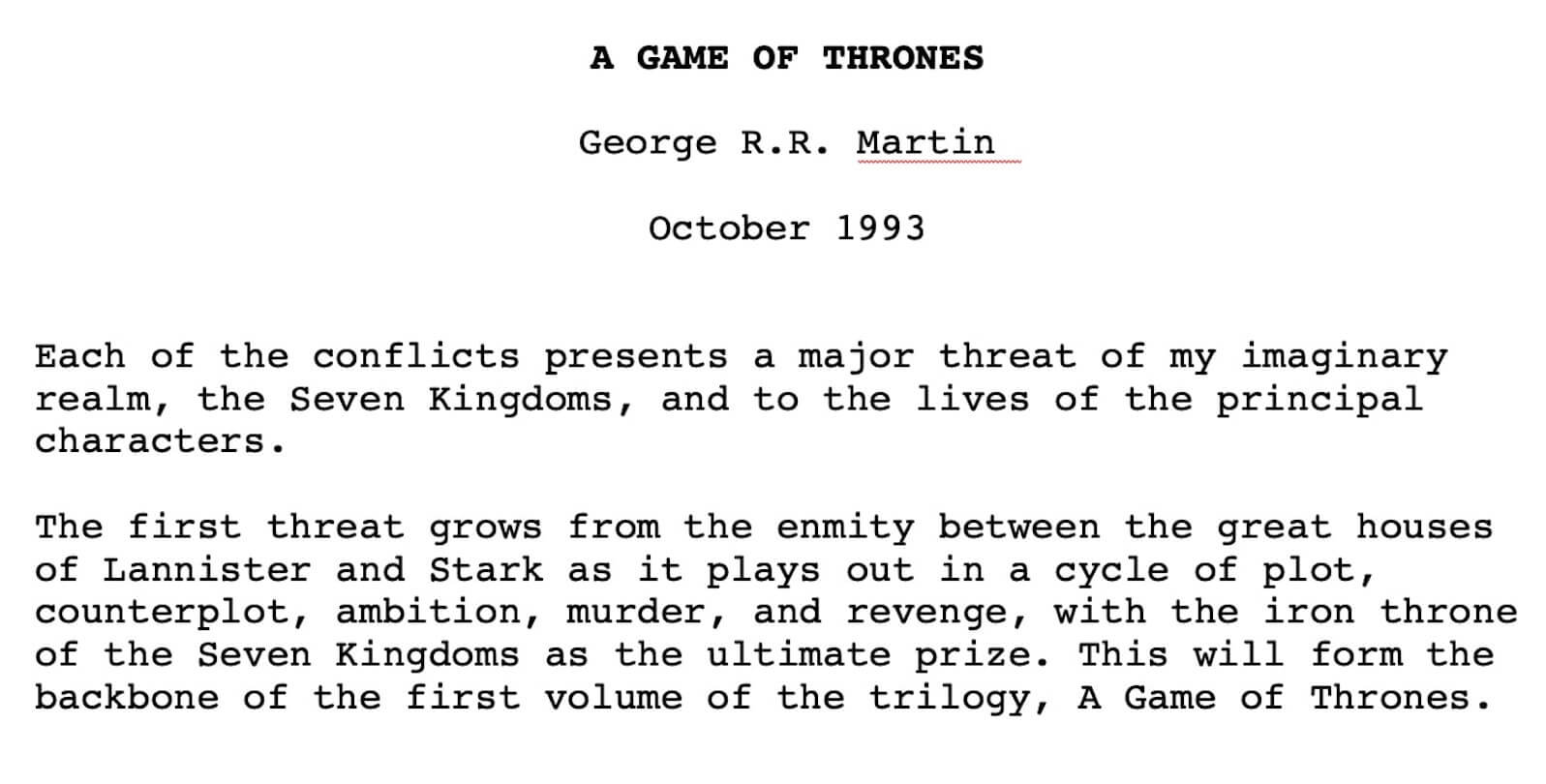If you have a great concept for a film, odds are you want to tell it immediately. That’s good, but even better is writing with a plan — and that means a great film treatment.
In this post, we will give you the knowledge you need to how to write an effective script treatment for your next film or TV show — or the idea that you have in your back pocket. We also provide a free film screenplay treatment template that you can download and use to guide your script writing right away.
How to Write a TV Show Treatment
1. script FILM TREATMENT USES
Understand the script film treatment
You've got a dynamite idea for a movie or series. You're ready to jump into your script pages, crank out this puppy, earn piles of dough, and change the cultural landscape forever.
We've got you 100 percent. But you might want to resist the temptation to start on your actual screenplay just yet. Experienced writers know that writing a movie means meticulous organization and clarity.
This is why film treatments are so useful: they boil your idea down to your characters and the story events that drive them to change.
So let’s examine how to write a treatment that both snags your readers and organizes your vision. We'll also look at TV and film treatment examples to inspire you — and then we'll provide a free script treatment template to nudge you along the path to writing your masterpiece.
FILM TREATMENT DEFINITION
What is a film treatment?
A film treatment (or story treatment) is a detailed summary of your film, TV show, or project. The screenplay treatment communicates all important scenes, sequences, and story points in a prose style that evokes the tone of your movie.
The many uses of a film treatment include:
- A behind-the-scenes reference for the screenwriter (or screenwriters) to guide and give a framework to the full script being written.
- A detailed summary designed to share the screenwriter's (or screenwriters') plan for the script with others before an actual script is written.
- An in-depth, deconstructed summary of an already-written script that distills and simplifies the structure and sequences of the full screenplay.
- A thorough story and structure roadmap that previews for others any major revisions that a screenwriter (or screenwriters) will make before starting on a rewrite.
Think of a film treatment as an engaging document that sets up your movie. They capture the big moments and tone, but very rarely contain any of your clever dialogue.
The intended audience for your treatment can include producers, executives, directors, and actors you want to attract to your film. But it’s also an extremely useful tool for the writer to get his or her story worked out before the actual writing.
Once you've completed your treatment you'll be better prepared to begin writing your screenplay in StudioBinder's free screenwriting software.
Click below to see StudioBinder's screenwriting software in action:
Sample Screenplay • Written in StudioBinder
You can write as many projects as you like with an unlimited page count all with the ability to collaborate with your team each step of the way.
2. Film screenplay treatment lenght and layout
How long is a film treatment?
When figuring out how to write a film treatment, you're probably wondering how long it should be. Treatments have no set page length, but you do want to keep them pithy.
If you’re writing without anyone specific in mind, try to keep a series or film treatment under ten pages, single spaced.
If you’re writing for someone more official, like a reader at a production company or studio, then make sure to ask what they’re looking for. Sometimes they will ask for 20 pages or more.

Film script treatment detail-meter
Treatments can be much longer than that too. James Cameron, for example, writes 70 page treatments to get his stories organized.
Everybody does this their own way.
But the guidelines exist to keep your presentation as strong as possible.
When screenwriter Craig Mazin wrote the screenplay for Identity Thief, he wound up doing a full page-one rewrite. As Mazin says in the Scriptnotes podcast, "I wrote this [treatment] up to help get everybody on the same page."
Here's the 30-page treatment he created (at that point titled ID Theft) to give producers, cast members, and executives an idea of what to expect — before he did the actual rewrite:
Click the image above to read the full film treatment for ID Theft, which became the released movie Identity Thief.
This treatment starts with breakdowns of the main characters before jumping into a scene-by-scene summary of the story, including key sequences and set pieces.
It's written in a conversational prose-screenplay hybrid style, with semi-scene headers for new locations.
3. Film treatment structure
How to write a screenplay treatment?
Approach writing your treatment like you would a present-tense short story. You will include all relevant story turns and maintain a voice that is colorful enough to portray the tone, but not overly stylized.
Consider cutting or significantly minimizing your subplots. The idea is to show your movie to a reader, or organize it for yourself.
So keep the driving story and the arcs of the main characters front and center. A good place to craft your treatment is within screenwriting software. Why? You'll want to eventually convert your story into a professional script format and syncs with production software.
Our screenwriting software takes all of the industry standards that have worked for years and continues on that culture of excellence — by making it better.
Read George R.R. Martin's early treatment for Game of Thrones in free screenwriting software right here:
Click to read George R.R. Martin's complete archival Game of Thrones treatment in StudioBinder's free screenwriting software.
Worth noting in the treatment above: even though George R.R. Martin admits that he doesn't like to outline in advance because, as he says, "I find that if I know exactly where a book is going I lose all interest in writing it," he still knows the value of a good roadmap. That's what a treatment provides for a writer.
You can not only write your TV or film treatment in our software, but then create an unlimited amount of scripts with unlimited page count.
What should a film treatment include?
Again, there’s no set format for what you should or shouldn’t include. The free film treatment template that we provide further down the page breaks it down for you. But as a general guide, you can employ the following items while writing a treatment (depending on who you intend to send it to):
- Title
- Your name
- Sections for logline, concept and theme (if needed)
- Summaries of all three acts, with pithy descriptions of the plot points, locations and characters.
- Airtight exposition and context where needed.
Including a logline is recommended. This is a one high-level, or two line summary of your film.
Explore our post on the art of writing a logline, and put a bit of energy into crafting a compelling one.

Use StudioBinder's free movie treatment template to lay the foundation for your script.
What not to include in a film treatment?
Generally you want to keep your film treatment economic and reader-friendly. Don’t go into too much exposition on anything — be it characters, locations, or actions. Avoid also:
- Any dialogue (save it for the script)
- Images, clip art (and anything else that’s not text)
- Paragraphs that are too long
- Distracting fonts
Similar to how you format a screenplay, use a tried-and-true font like Courier (size 12, single-spaced).
Related Posts
4. Film treatment examples
Examples of film script treatments
Look to existing film treatments online.
This will give you a sense of what story beats to include, or not include. You can also base your film treatment template off a particular style you like.
On their site Wordplayer, working screenwriters Ted Elliott and Terry Rossio posted a few of their own film treatment examples. Their 1994 treatment of Mask of Zorro is a glimpse into an effective script treatment.

Film screenplay treatment examples: The Mask of Zorro by Ted Elliott and Terry Rossio
In this eight-line paragraph, you’re launched into the uproarious world of Mexico in the early 1800’s.
You’re also clear on whose perspective you see it through.
It spends its page real estate on setting up up the brothers, Alejandro and Jaoquin, because they’re crucial characters.
Alejandro will grow up to become Zorro, and will be motivated by his desire to avenge Jaoquin’s death.
It also sets up Montero, because he is the villain of the film.
From movie script treatment to screen: The Mask of Zorro (1998).
The rest of their Mask of Zorro script treatment carries forth this established prose format.
Too simple for your story?
Well, Elliott and Rossio include more film treatment examples to show different formats they use.
Again, there’s no set way to do it, so format your film treatment template to the demands of your story.
For example, their film treatment for Godzilla (1998) includes headings for locations and big events. This makes for a highly skimmable read.
It’s also handy because their story jumps around the world a lot, and keeps its actions clear amongst the many locations.

Movie screenplay treatment: Godzilla (1998).
But what about the other items we mentioned (title, name, etc.)?
The team offers another film treatment example from an unproduced Sinbad film (the swashbuckler, not the comedian).
In this format, they divided up their treatment into sections including Concept, Theme, Characters, and Synopsis.
This lets the reader pick and choose what they want to read, while giving a very direct feel for their vision.

The concept section of Ted Elliott and Terry Russo’s unproduced Sinbad script
You can dig up many more film treatment examples (in PDF and HTML) to reference more examples that might help you.
Wrapping up
Get some feedback
Learning how to write a film treatment provides a great resource for both you and “them.”
For you, it will set the groundwork for your story, and get you thinking about the “look and feel” interested parties will need to get psyched on your idea.
For “them” (meaning producers, actors, or even directors) it will provide a quick, readable “download” of your story.
It should showcase your voice and your overall creative vision.
Once you fill out your screenplay treatment template, get some feedback. Tweak it until it becomes the movie you want to write.
And then (and only then!) should you start writing your screenplay.
FREE Film Treatment Template

Download your FREE film treatment template.
Just enter your email address and we'll instantly send it to you!




This the best information on treatments I have ever seen.
Thank you,
Chris Rousselle
crousselle56@gmail.com
Does StudioBinder create a budget?
– Richard Miller
This was helpful and your camp deserves more views and reads! Thank you for this!
Profound; You are the best guys, thank you. I will save this link as source of information whenever I’m need of it.
This was really helpful!
Thank you.
This information is gold – thank you so much for creating this superb resource.
Thank you so much guys. Your efforts to assist up and coming filmmakers is invaluable. You are appreciated.
It's well explained and very educative. Thanks a lot.
Just what I was looking for. Thank you very much.